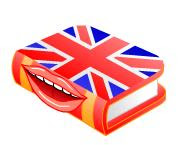Twenty-four
bridges span the Thames in London, from Kew Bridge to Tower Bridge. Some
our railway bridges and there is a footbridge, however most are road bridges.
The oldest is London Bridge, which was originally made from wood. In 1209 it
was replaced by a stone bridge with shops and houses along its sides. This was
followed by a granite bridge in 1831, and the present concrete bridge in 1973.
Photo taken by
Adrian Pingstone in November 2004
Lambeth Bridge is
the central bridge of the three bridges in the photograph on the left. Nearest
the camera is Westminster Bridge and in the far distance is Vauxhall
Bridge.
Seen from the
London Eye observation wheel.
Tower Bridge: 1894
Tower Bridge
has stood over the River Thames in London since 1894 and is one of the finest,
most recognisable bridges in the World. It is the London bridge you tend to see
in movies and on advertising literature for London. Tower Bridge is the only
Thames bridge which can be raised.
Its middle
section can be raised to permit large vessels to pass the Tower Bridge. Massive
engines raise the bridge sections, which weigh about 1000 tons each, in just
over a minute. It used to be raised about 50 times a day, but nowadays it is
only raised 4 to 5 times a week.
Tower Bridge is 60 meters long with towers that rise
to a height of 43 meters.
London Bridge: 1176
London Bridge
is between the City of London and Southwark. It is between Cannon Street
Railway Bridge and Tower Bridge. London's original bridge made this one of the
most famous bridge in the world.
The first
London Bridge is thought to have been built by the Romans sometime in the
first century, with several rebuilds over the centuries. Eventually wooden
bridges were replaced with a stone bridge, the first one being started in 1176
and finished years later.
Throughout its
history, London bridge has been a busy thoroughfare, and was once lined with
shops. The road over the bridge was only about 4m wide between the shops. It
was so narrow it often jammed with people, horses and carts. In 1733 a 'keep
left' rule was enforced to keep the traffic moving. This became the rule of the
road in Britain.
In 1757 the
houses and shops on the bridge were demolished. A new bridge was built in 1831
to replace the old one. This in turn was demolished in 1967 and rebuilt in Lake
Havasu City, USA, as a tourist attraction. The present London bridge opened in
1973.
The
Millennium Bridge: 2000
Bridge with St Paul's Cathedral in the background.
The Millennium bridge is a pedestrian bridge erected
to connect the Tate Modern Art Gallery to the City and St Paul's Cathedral.
Almost immediately after opening the bridge had to be shut because of dangerous
swaying. It has now been
reopened.
The Millennium bridge is about 320 metres, costs 16
million pounds to build and only takes pedestrians.
Southwark Bridge
Southwark Bridge is a road-bridge linking Southwark
and the City across the River Tames. It was designed by Ernest George and Basil
Mott and opened in 1921.
Blackfriars Railway Bridge
Blackfriars Railway Bridge is a railway bridge
crossing the River Tames between Blackfriars Bridge and the Millennium
Bridge
Blackfriars Road Bridge
Westminster Bridge
Westminster
Bridge is a road and foot traffic bridge over the River Thames between
Westminster and Lambeth. The current Westminster Bridge was opened in 1862 to
replace an earlier bridge which dated from 1750.
There had been
a ford at low tide here since Roman times and many historians believe that the
Romans used to wade cross the river near this point.









































































































